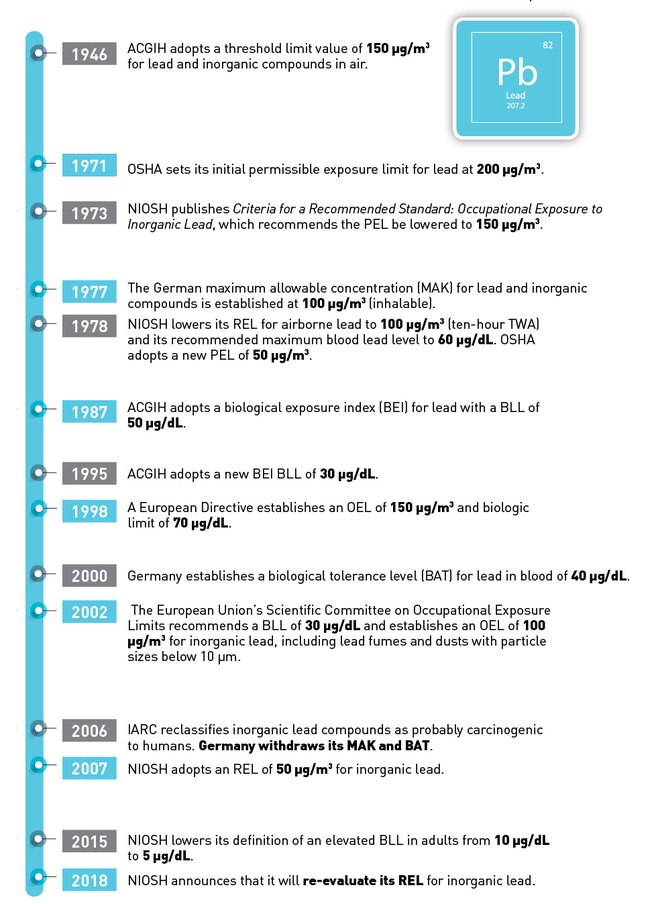DEPARTMENTS
BY THE NUMBERS
Lead Exposure Limits
In August, NIOSH announced its intent to re-evaluate its recommended exposure limit for inorganic lead. As one of the earliest known occupational hazards, lead has long been a focus of national and international organizations responsible for setting occupational exposure limits. The following is an abbreviated timeline of OELs and blood lead levels for lead. Except where noted, all OELs are eight-hour time-weighted averages.
From NIOSH’s workplace health and safety topic web page for lead:
“Within our bodies, lead is absorbed and stored in our bones, blood, and tissues. It does not stay there permanently, rather it is stored there as a source of continual internal exposure. As we age, our bones demineralize and the internal exposures may increase as a result of larger releases of lead from the bone tissue.”SOURCES
Federal Register
: Request for Information about Inorganic Lead
(August 2018).
National Academies: Potential Health Risks to DOD Firing-Range Personnel from Recurrent Lead Exposure
(2013).
NIOSH: “Lead: Information for Workers
.”
Tap on the graphic to open a larger version in your browser.
In August, The Knoxville News Sentinel reported that a student intern and a researcher at Oak Ridge Associated Universities had devised an experiment to replicate the McCluskey incident in order to study the effects of radiation on the body. By irradiating vials of their own blood for different lengths of time, the researchers hope to generate data that clinicians and first responders can refer to following an exposure incident.
Read more from the News Sentinel.


